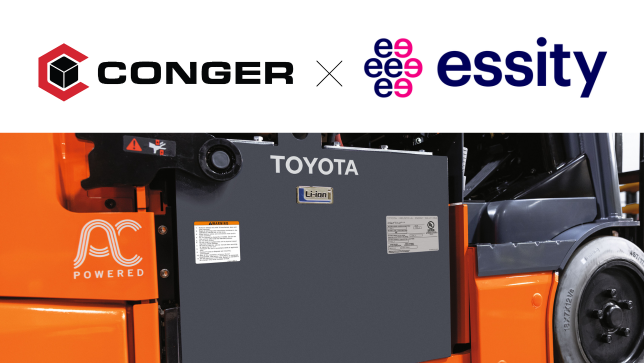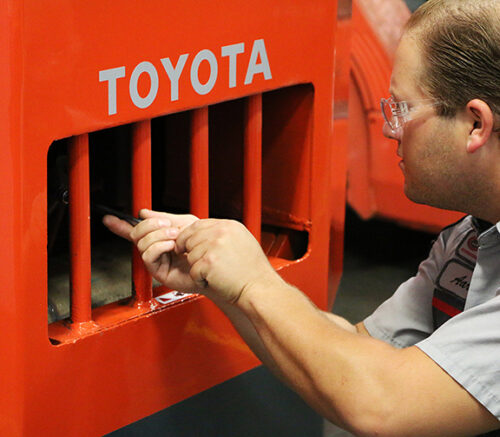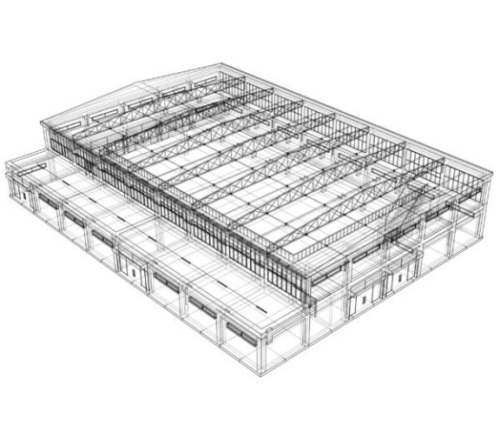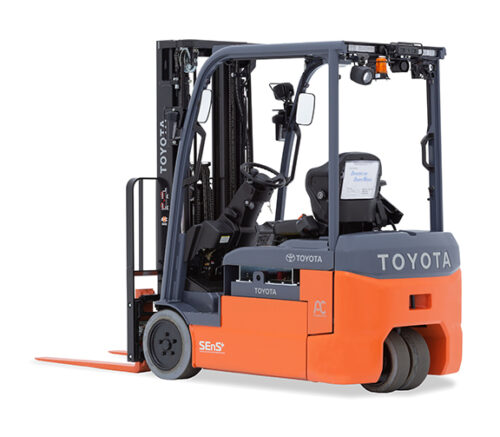Deriving its name from “essentials” and “necessities,” Essity is a company dedicated to producing vital hygiene and health products while demonstrating a commitment to global well-being through sustainability and innovation.
Their product line includes napkins, hand towels, toilet paper, and other similar items tailored for commercial use. With their roots stretching as far back as 1849, Essity offers a variety of products and services that are essential for everyday life.
CASE STUDY HIGHLIGHTS
![]()
CHALLENGES
Meeting the warehousing demands of a large industry like Essity requires a robust and durable fleet of forklifts.
In the past, Essity has relied on its fleet of internal combustion forklifts powered by liquified petroleum gas to handle its operation. However, by 2019, its fleet was reaching the end of its optimal operational life.
We had some forklifts with over 15,000 hours on them,
Scott Sasman, Factory Logistics Manager
With a busy, 24/7 production schedule at their Neenah, WI plant, the management team at Essity knew they had to do something fast.
Essity devised a plan to swiftly replace its aging fleet with seven new Toyota internal combustion lift trucks, each equipped with a carton clamp attachment.
Then COVID-19 happened…
Despite their pressing needs, the unavailability of equipment, universally long lead times, and general uncertainty amid the global health crisis all forced Essity to rethink its entire fleet replacement plan.
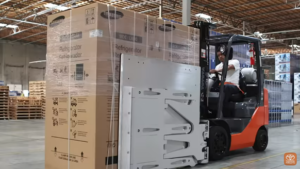
SOLUTIONS
Conger Steps In
Fortunately, as Essity was altering plans for their fleet, they received a call from their Conger account manager, who asked if Essity would be interested in trying electric forklifts.
Although open to the idea, Essity had previously tested four-wheel electric forklifts with lead-acid batteries; however, these forklifts did not meet their expectations. The main issue stemmed from the maintenance demands and safety concerns associated with lead-acid battery chemistry.
For us, lead-acid was a hard ‘no.’ We did not want to put our people at risk removing and installing batteries, watering them, washing them – any of that,
Scott Sasman, Factory Logistics Manager
Other problems included operators reporting ergonomic complaints due to the smaller operator compartment in the four-wheel electric forklifts.
Essity has always been a strong proponent of sustainability. And we wanted to go electric with our forklifts for a long time. There just wasn’t the right combination of equipment at the time to make it work for us,
Scott Sasman, Factory Logistics Manager
However, the Conger team proposed a different approach this time. They suggested trying an electric three-wheel forklift with a lithium-ion (Li-ion) battery.
The advantages of Toyota lithium-ion forklifts over lead-acid batteries and LPG for Essity made sense because:
- No battery handling, maintenance, or watering (operators do not even need to open the battery compartment).
- The removal of propane tanks resulted in reduced fuel costs and a decreased risk of operator injuries when changing fuel tanks.
- Increased floor space by eliminating the need for spare batteries, watering stations, or personal protective equipment (PPE).
- A longer battery life as a Li-ion battery can last up to ten years, compared to five years or less for a lead-acid battery.
- A longer chassis lifespan since electric forklifts have fewer components than LPG trucks, resulting in fewer potential issues.
- Faster charging batteries as Li-ion batteries can charge in as little as 15 minutes, compared to four or five hours for lead-acid batteries (via opportunity charging).
It was fair to say that Essity was impressed with these advantages.
The Conger team then promptly ordered, prepared, and shipped these electric forklifts to the Essity plant in Neenah.
After a month of extensive use, several tests to ensure the new trucks could match the productivity of the LPG trucks, and little to no negative feedback from the operators, Essity was ready to proceed with replacing their aging lift trucks.
The Conger and Toyota teams’ quick response helped seal the deal,
Scott Sasman, Factory Logistics Manager
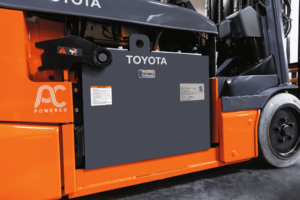
IMPLEMENTATION
The Implementation Process
Ordering the forklifts, their parts, and putting each lift truck into service spanned nine months.
To streamline the workflow, Conger and Essity followed a specific process:
- Conger received the batteries and held onto them until the truck chassis and attachments arrived and installed them.
- Essity consulted their local fire department to determine the safest location for placing the battery chargers.
- Essity hired contractors to expand their electrical infrastructure to accommodate the new chargers by installing new wiring to the charging area.
With the initial preparations in place, the next step was to transfer the specialty equipment and accessories of each retired LPG forklift (such as scanners and screens) onto the new lithium-ion forklift.
Fortunately, Conger’s permanent on-site technician at Essity was present throughout the entire process and was responsible for swapping out the accessories and helping each operator become accustomed to their new forklift.
A Couple of Adjustments
The fleet replacement process was smooth, thanks to the careful planning and collaboration of Essity and Conger. Nonetheless, a few challenges arose that required attention.
For many veteran LPG forklift operators, some with over 35 years of experience, transitioning to electric forklifts represented a significant change.
For veteran LPG forklift operators – some with 35 or more years of experience – switching to electric forklifts can be a big change.
Scott Sasman, Factory Logistics Manager
Essity also faced the challenge of dealing with staff turnover and retirements, resulting in a workforce with limited experience and knowledge of forklifts.
Luckily, when both the experienced and new operators saw the benefits of the new Li-ion forklifts, much of their initial resistance to these Li-ion forklifts dissipated.
Once we could show the folks on the floor how these new lithium-ion powered electric forklifts work, we were able to overcome a lot of apprehensions. For example, we could plug the battery in and say: ‘This is all you have to do to charge it.
Scott Sasman, Factory Logistics Manager
To ensure there was no confusion, Essity took the extra step of putting together training materials on each forklift. Including topics like:
- The differences between lead-acid and lithium-ion batteries.
- How to plug the battery in and put it on charge.
- Pictures of what the battery charger should look like when the battery is charging.
Aches, Pains, and a Plan to Relieve Them
After using the new lift trucks for a few weeks, some operators began experiencing discomforts like achy shins and ankles.
To address these complaints, Essity directed operators to their on-site nurse.
Additionally, Essity offered operators the services of a visiting chiropractor to provide adjustments. To further alleviate discomfort, Essity equipped some forklifts with air-ride suspension seats for better cushioning.
With these measures in place, many complaints disappeared after just a few weeks. The on-site nurse attributed this to muscle memory as the operators needed time to adjust to their new operating position.
RESULTS
Labor Savings and Fast ROI
The transition to Toyota lithium-ion forklifts significantly impacted Essity and its work environment.
What we’re most proud of is that switching from propane to electric forklifts has reduced our carbon dioxide output by 245 tons per year. And that’s just from replacing seven lift trucks.
Scott Sasman, Factory Logistics Manager
In addition to the positive environmental impact, Essity has reaped numerous other benefits from its new electric fleet such as:
- Anticipated return on investment (ROI) within 36 months.
- 52% lower energy costs.
- A safer work environment thanks to eliminating tank changes and the necessity for handling or watering batteries.
- An increase in productivity, as the forklifts can “boost” charge in as little as 15 minutes or charge from 30% to 100% in one to 1 ½ hours.
- Quiet operation and the absence of exhaust fumes reduce fatigue and strain on operators and pedestrians.
With these results from their new electric forklifts, Essity is considering replacing the rest of their LPG fleet with Toyota lithium-ion forklifts.
By the end of the year, 95% of the Neenah IDC will have lithium-ion electric forklifts.
Scott Sasman, Factory Logistics Manager
